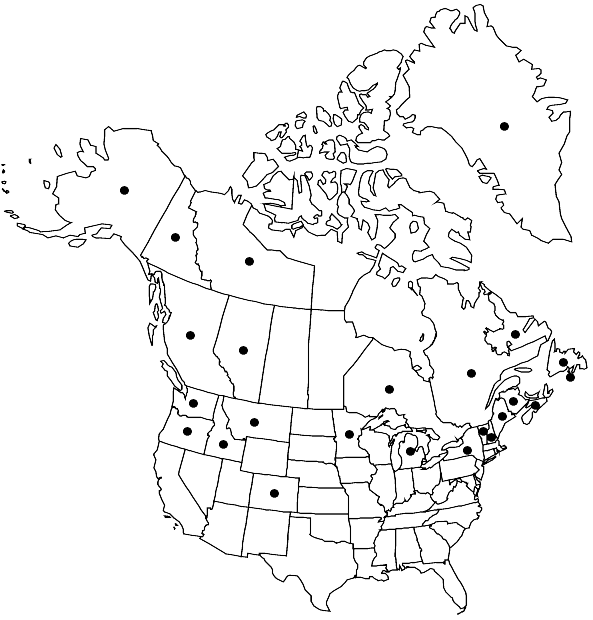Codriophorus fascicularis
in R. Ochyra et al., Cens. Cat. Polish Mosses, 141. 2003,.
Plants fairly coarse to slender, densely to loosely caespitose or forming extensive patches or mats, dull, yellow, yellow- to olive brown, yellow-green to green, brown to blackish brown distally, brown to blackish brown proximally, sometimes brown or black throughout. Stems (1–)4–10 or, sometimes, as much as 20 cm, often with short, tuft-like, lateral branchlets. Leaves straight to somewhat curved, narrowly lanceolate to linear- or ovate-lanceolate, (1.5–)2.2–3.6(–4) × 0.5–1(–1.5) mm wide; margins entire throughout; apices gradually tapering to a straight acumen, acute to narrowly rounded-obtuse, entire distally; costa extending (2/3–)3/4–5/6 of the leaf length, (40–)50–70(–80) µm wide at the base, 2-stratose throughout; laminal cells long rectangular, (10–)20–60(–70) × (5–)7–8(–10) µm. Inner perichaetial leaves oblong-lanceolate to elliptic, yellowish hyaline throughout. Seta reddish to blackish brown, (2–)3–8(–11) mm. Capsule brown, ellipsoid, obloid to cylindric, (1–)1.2–2.5(–3.1) mm, smooth, lustrous, peristome teeth 550–600(–800) µm, reddish brown, densely spiculate-papillose, split nearly to the base into to 2 filiform prongs, with a low basal membrane. Spores 12–15(–17) µm.
Habitat: Exposed or protected, moist granite, basalt, gneiss, and sandstone, boulders, stones, cliffs, and rock faces and outcrops in or close to streams, creeks, brooks and lakes, often in sites periodically submerged or splashed with water, in seepage and melt-water runnels, occasionally bark at tree bases, logs in water and shingle roofs
Elevation: low to high elevations (0-4100 m)
Distribution

Greenland, St. Pierre and Miquelon, Alta., B.C., N.B., Nfld. and Labr., N.W.T., N.S., Ont., Que., Yukon, Alaska, Colo., Idaho, Maine, Mich., Minn., Mont., N.H., N.Y., Oreg., Vt., Wash., Eurasia, Atlantic Islands (Azores, Iceland), Pacific Islands (Society Islands).
Discussion
Codriophorus fascicularis is one of the most common species of the genus, with two centers of distribution. It is more frequent and abundant in western North America, extending from the Aleutian Islands and western Alaska southwards to northern Oregon, with highly isolated stations in Colorado, where it reaches its highest altitude of about 4100 m in North America. In the eastern part of the continent it ranges from Labrador to the Adirondack Mountains of New York. It is the only species of the genus in North America that occasionally penetrates into the Arctic. It barely reaches beyond the Arctic Circle in the Baird Mountains in Alaska and has once been recorded on Baffin Island slightly below the Arctic Circle. The species is common and abundant in the southern parts of East and West Greenland, and in the latter region it crosses the Arctic Circle, extending to ca. 70º N on Disko.
Codriophorus fascicularis is at the core of a complex of four closely related species that all occur in East Asia and constitute subsect. Fasciformes within sect. Fascicularia (H. Bednarek-Ochyra 2006). In the flora area that subsection comprises also C. corrugatus. Codriophorus fascicularis is characterized by its costa that extends 3/4–5/6 or very rarely only 2/3 of the way up the leaf and is spurred or forked at the apex only. The costa is situated at the bottom of a moderately deep, wide- to narrow-angled and open or partly closed channel, and in transverse section it is flat on the adaxial side and flattened to somewhat curved abaxially. In addition, the leaf margins are entire all around including the apex, and the basal marginal cells form a distinct pellucid border consisting of 5–18 cells. It is likely to be mistaken for C. corrugatus and epilose ecads of C. varius; the characters discriminating them are discussed under those species.
Selected References
None.